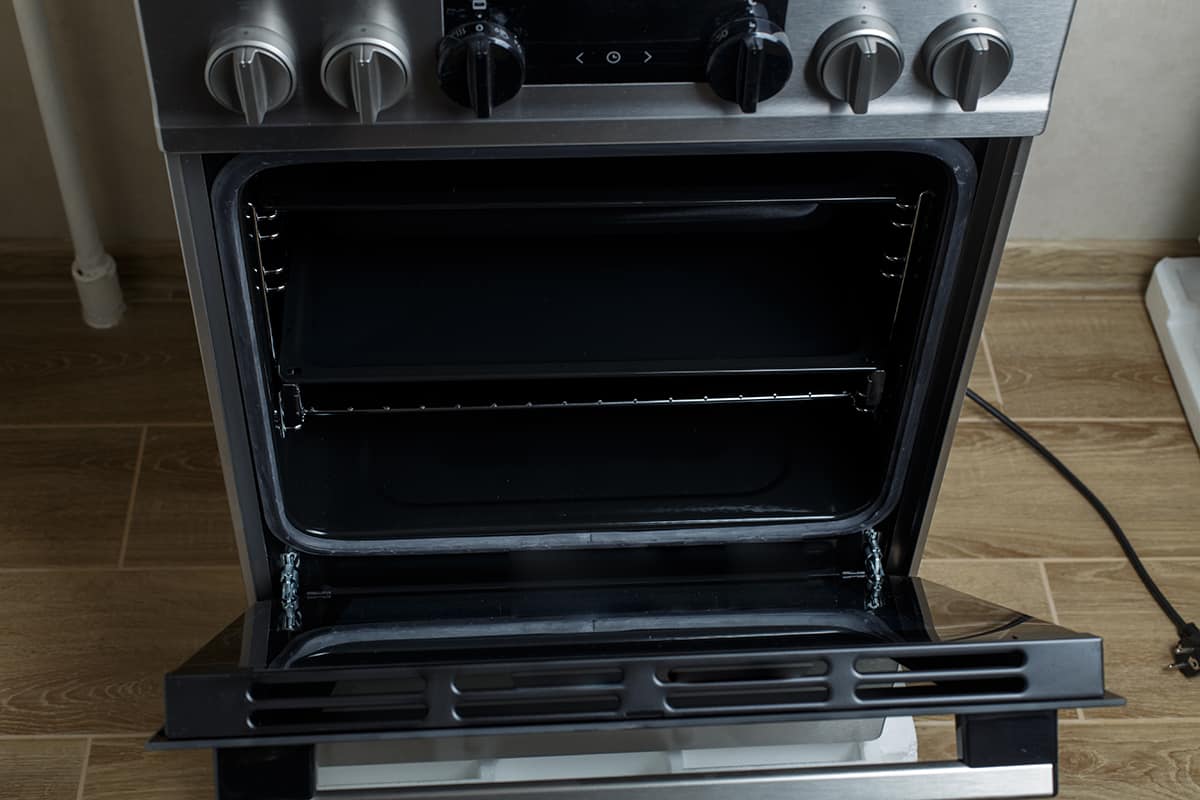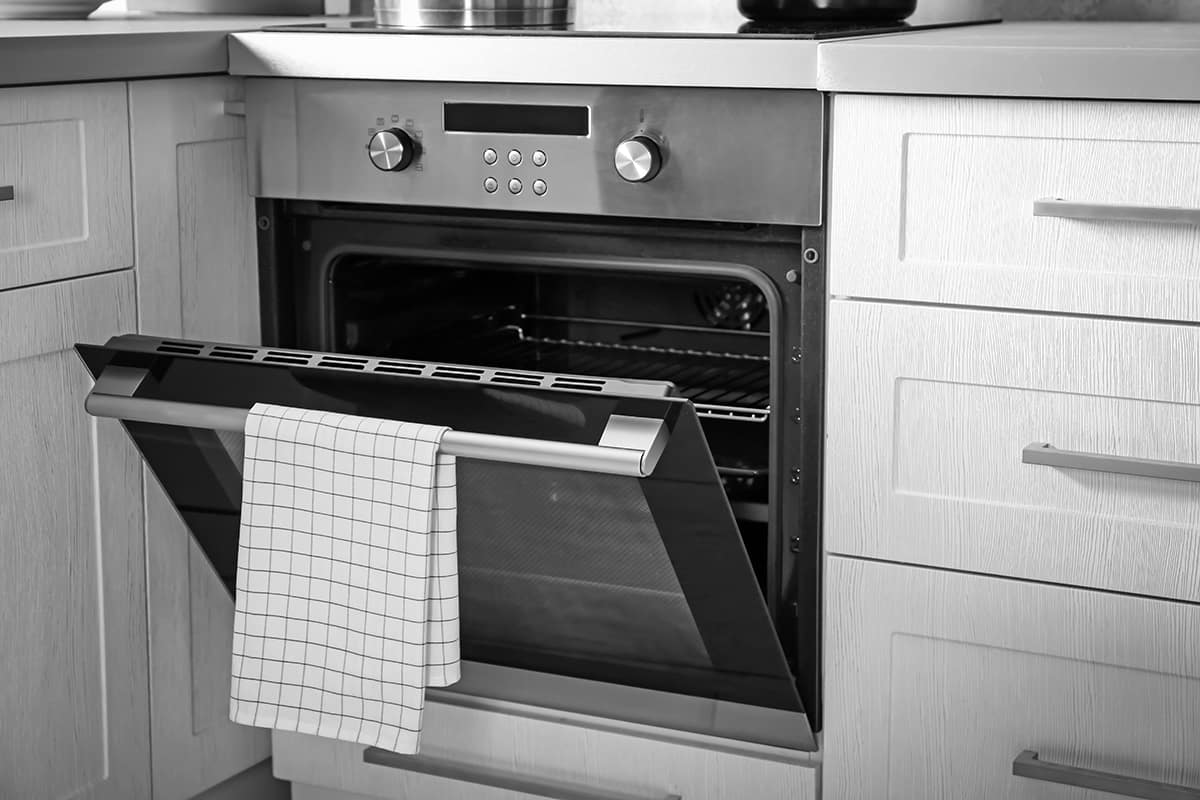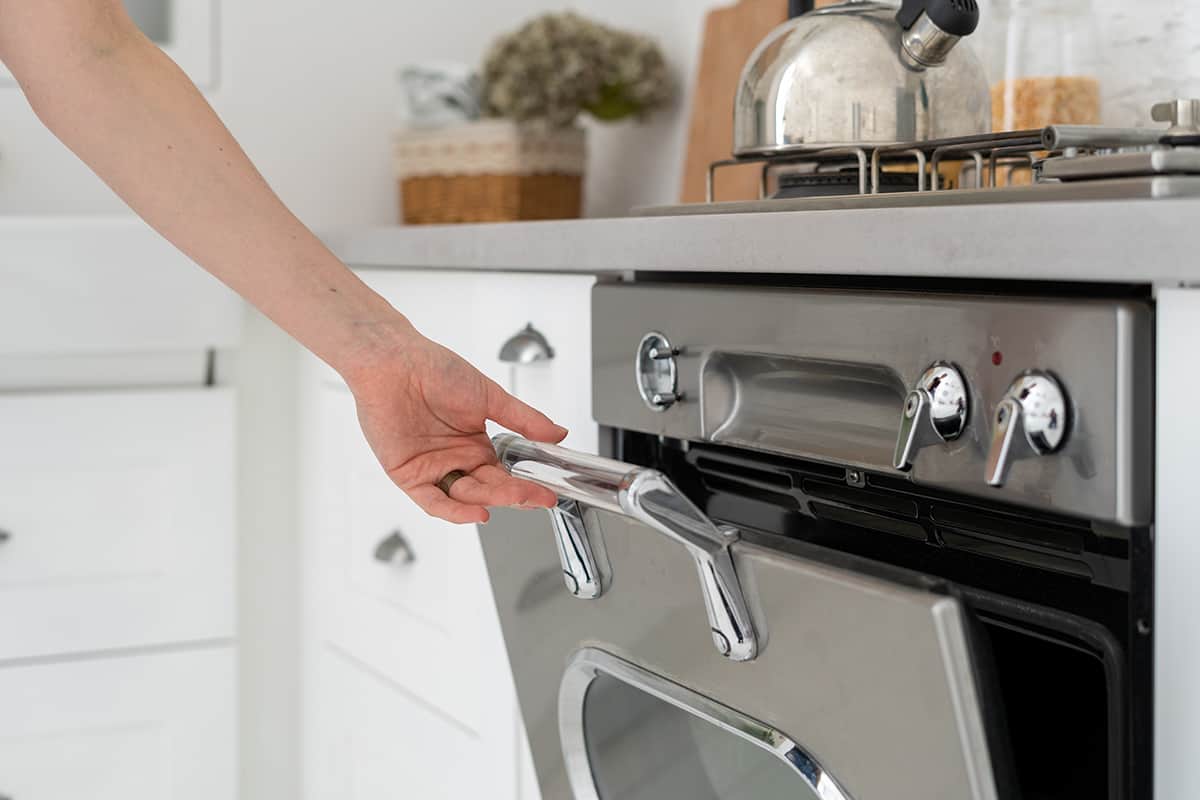While electric ovens are the bee’s knees, you can’t go wrong with gas, especially if you live in a part of the country where your home is supplied with good, clean, cheap fuel. But gas ovens don’t just plug into a wall; you’ll need to manually start a fire to get the oven nice and hot.
After setting up your gas oven, you will need to ignite the pilot light. To do this, you will need to open the bottom cabinet and place a live fire near the pilot light tube. When the pilot light is on, shut the bottom cabinet door and preheat your oven for baking.
In this guide, I’ll explain what a gas oven is and how it works, how gas ovens differ from electric ovens, and how to get a gas oven working for the first time.
What Is a Gas Oven?

Simply put, a gas oven is an oven that uses natural gas or liquid propane as a source of fuel. They are just as readily available as electric ovens, but whether or not you should purchase one depends on the availability of natural gas in your home. Alternatively, you can hook a gas oven up to a propane tank, making it a portable option if you wish to do your baking outdoors.
Modern gas ovens are incredibly safe. They come with built-in safety valves that prevent gas from flowing into the device and the burners when there isn’t enough gas to produce a live flame.
How Do Gas Ovens Work?
There are 4 main parts of a gas range: the burner assembly, igniter, safety valve, and control dials or buttons. I’ll explain what they are and what they do down below.
Burner assembly
The burner assembly consists of an aluminum tube that feeds gas to the burners, which are found on the stovetop and within the walls of the oven. This part is spaced at the proper distance from the igniter
Igniter
The igniter is the portion of the gas oven that sparks the gas to combust into a living flame. Some gas ovens have electric igniters that, when activated via the control dials, will produce sparks. You can tell when the igniter is working by a constant ticking noise. Gas ovens without electric igniters rely on a pilot light, which remains on indefinitely (until it’s doused) in the bottom cabinet.
Safety valve
The safety valve is a moderately new feature installed in most modern gas ovens. Its main job is to prevent gas from entering the burner assembly when the igniter is not turned on. The safety valve also regulates the flow of gas to the pilot light, ensuring that there is never more gas than needed until you turn the oven on.
Controls
The controls on a gas oven come in the form of buttons or dials. They tell the safety valve when to supply more gas to the igniter and how much, depending on how high or low you have set the oven.
Gas vs. Electric Ovens

Now, how does a gas oven differ from an electric oven?
The first point of difference is the fuel source. Gas ovens need to connect to a gas supply line to feed fuel to the igniter and/or pilot light. Some gas oven models require electricity to run the igniter and certain features like clocks or timers.
Electric ovens are simple plug-and-play devices where everything, from ignition to temperature control, is managed via an electronic control board. Simply put, electric ovens cannot operate without a consistent current.
In terms of upfront costs, gas ovens can be slightly cheaper than electric ovens. When looking at the cost of fuel, gas is generally cheaper than electricity, but the cost per cubic foot of gas varies from place to place.
Something else worth mentioning is the appearance of each oven type. Gas ovens are standalone devices that have large footprints and require between 3 and 6 inches of clearance on all sides. Electric ovens come in various shapes and sizes, including integrated models that can be directly built into walls to save floor space and enhance your kitchen’s décor.
How to Light a Gas Oven for the First Time
So, you’ve purchased a gas oven for your home. The only question is, how do you start the darned thing?
Before doing anything else, it’s a good idea to at least skim through the oven’s paperwork to see how to use it. There should be a section in the manual that describes in detail how to turn the oven on. If you don’t have time to go through the tiny print, I’ll describe how to light a gas oven for the first time.
Gas ovens with electric igniters
If your gas oven comes with a power cord sticking out of the back, then you can breathe a sigh of relief.
Turning on a gas oven with an electric igniter is simple work. Just plug the device into the nearest wall outlet and turn the oven dial. You should hear a constant ticking noise, which indicates that the electric igniter is trying to spark the gas flowing through the burner assembly. When the ticking noise stops, the oven should be ready for preheating.
Gas ovens with pilot lights
These types of gas ovens are a bit trickier to work with. You will need to get on all fours to activate the pilot light before turning the oven on.
To do this, open the bottom cabinet on the oven and locate the aluminum gas tube. Using a match or a lighter, direct the flame to the gas tube until the pilot light is on. When the pilot light is active, carefully shut the cabinet door and turn on the gas oven via the control board.
Examine the oven’s manual to see how many pilot lights it has. Some gas ranges have two pilot lights for each oven wall, while some may only have a single pilot light with a wide fire spreader to direct heat to all sides.
Why Does Pilot Light Turn Off?
Normally, you only need to turn on igniting the pilot flame once. Each time you want to use the oven, the living flame will ignite the influx of gas to preheat your oven. However, there may be instances where the pilot light inexplicable turns off. Why is that?
Lack of oxygen
The most common cause is that the pilot light is not receiving enough air. The pilot light requires fuel (gas) and oxygen to remain on, and preventing one of these things can cause it to shut off on its own.
Luckily, the solution is simple. Try increasing the clearance between the oven and the kitchen wall or kitchen cabinets. These obstacles can block the air ports in an oven, preventing air from entering the gas oven’s bottom cabinet and feeding the pilot light.
Dirty gas tube
Over time, debris from your oven can leak into the bottom cabinet. When those solid food remnants land on the burner assembly or pilot light, you may find yourself having to constantly turn the pilot light on every time you wish to bake bread.
To resolve this issue, shut off the oven, wait for it to come down to room temperature, and then clean the bottom cabinet. Pay attention to the pilot light’s gas tubes. You may need a toothpick to remove solid debris from the tubes.
After cleaning the tubes, try igniting the pilot light and turning on the oven. Sometimes, the holes in the burner fire feeder can become clogged, so you’ll need to unclog them, too.






